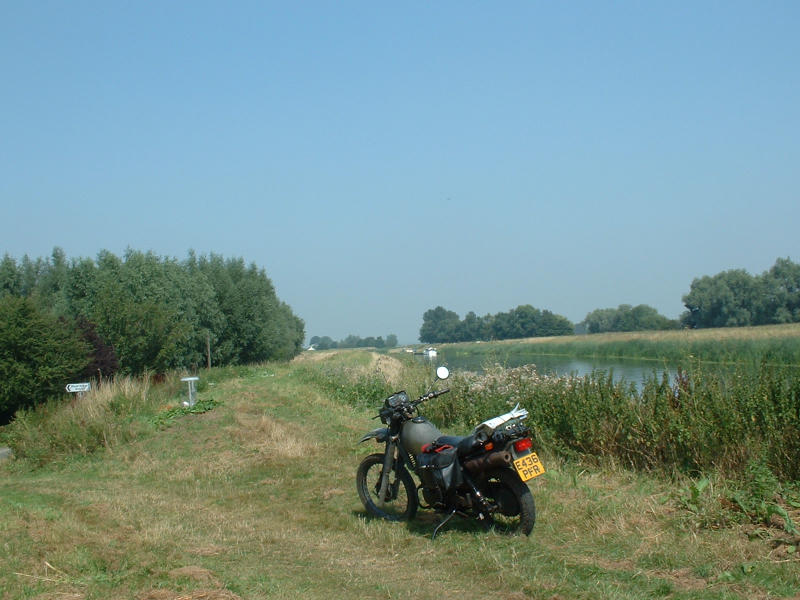
The rivers in the Cambridge area and from/through the Fens to the North of Cambridge flow to Denver Sluice, which lets them flow to the sea at low tide. This is the first stage of the draining of the Fens. If you only open the sluice at low tide, you lower the water-level of the river system to the low-tide level. It still leaves the drained Fens below river levels, to which they have sunk on draining, from which water must be pumped up to the rivers so it can flow to the sea at Denver Sluice. The sluice at Denver is not the only one on the Fens, but it is probably the most famous.
These are some pictures taken on a recent photo-expedition:

Beside the Great Ouse at Ten Mile Bank - the last section on the way to Denver Sluice.
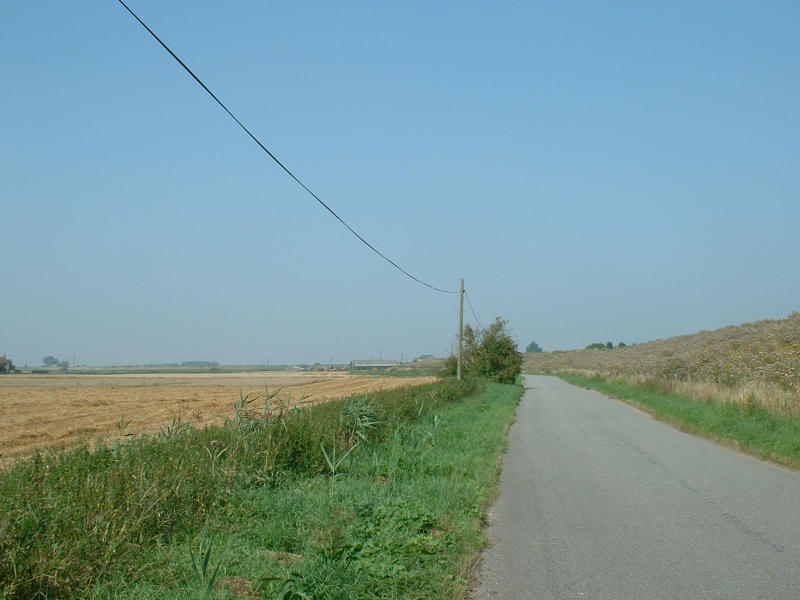
Beside the Great Ouse very close to Denver. The river is in the tall bank to the right while the rich flat agricultural land is the drained bogland the river previously ran across.
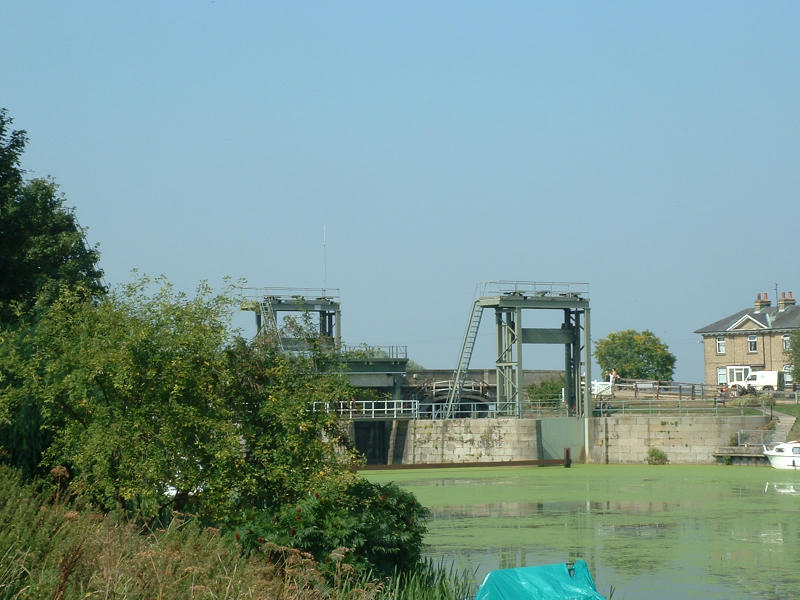
Looking at the sluice from the upstream fresh-water side.
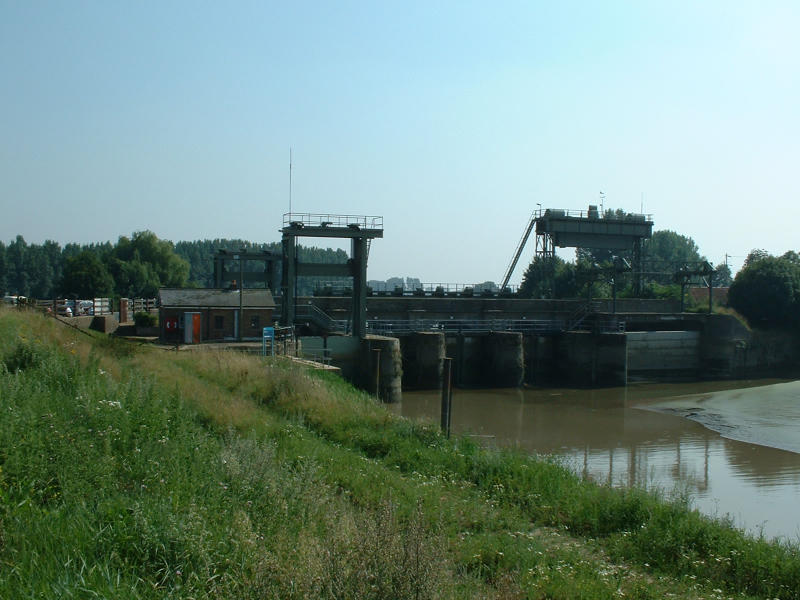
The sluice seen from the salt-water (North) side.
The masonry abutments and bridge are from 1830's, designed by the Scottish engineer Sir John Rennie. This strong structure replaces earlier ones which did not endure. The two more recent steel vertical sliding gates replace the system of four wooden swinging gates which were necessary to enable boats to pass through, whichever side had the higher water level.
The salt-water side can be seen at high tide on another website in this fairly low-resolution image
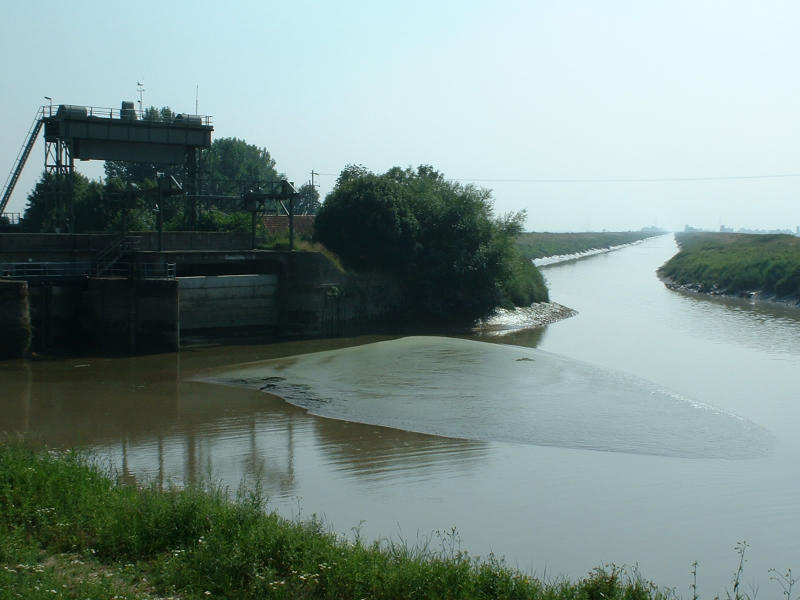
Looking around to the South-West, the New Bedford River, better known as the One-hundred-foot drain, is tidal and runs twenty miles to its own sluice around Earith. Dug mainly by over 10000 prisoners-of-war in the mid-1700's.
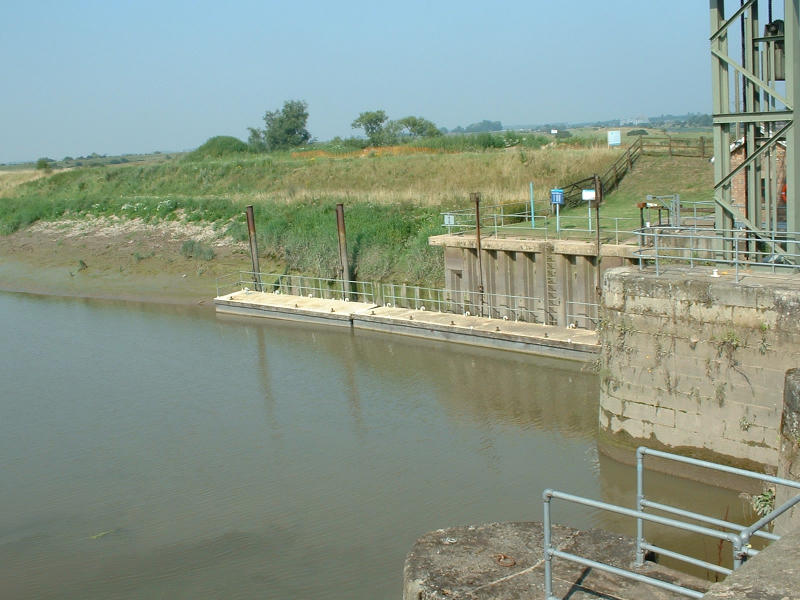
The abutments seen from the bridge with the tidal range obvious from the water line. It's low tide here. The tidal range is high around Britain and especially here with the "pistoning" effect of The Wash, into which the Ouse flows beyond King's Lynn.
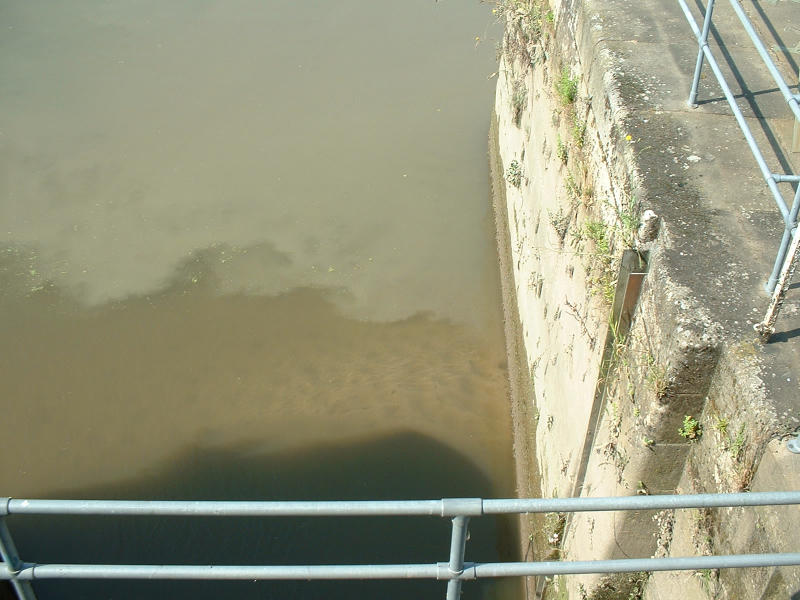
Fresh water flowing through the sluice meets salt water for the first time on its journey to the sea.
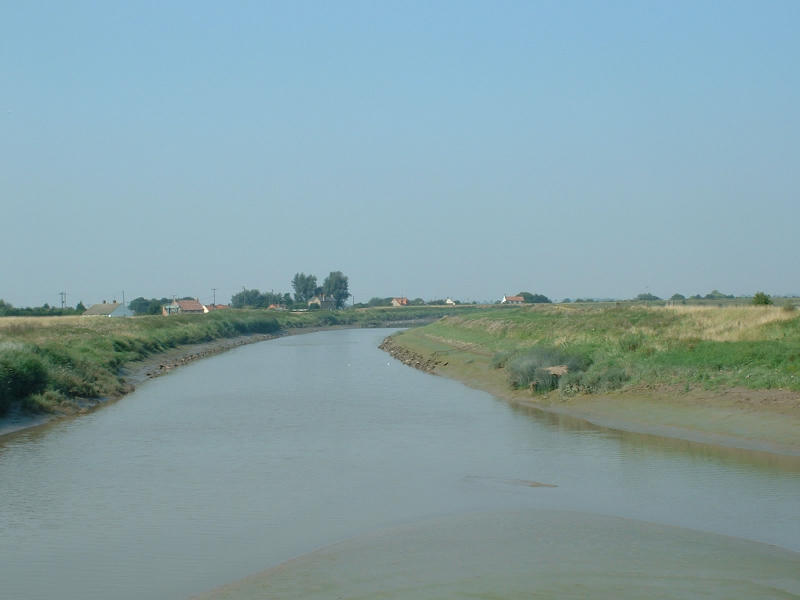
Looking onwards, downstream, from the Sluice to the tidal Ouse.